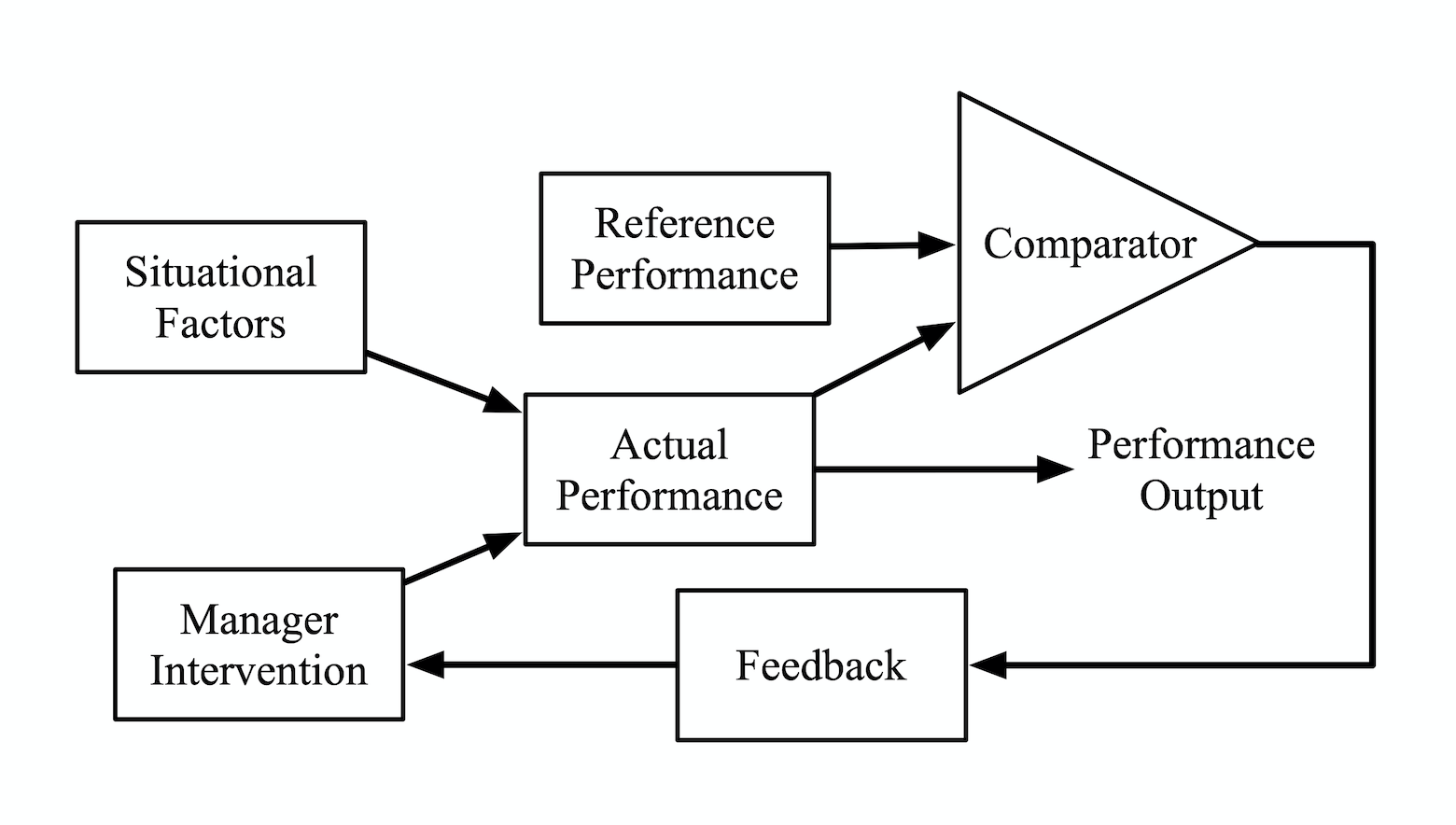Feedback-driven management
Feedback-driven management
Written by John Berry on 25th April 2019. Revised 26th April 2019.
1 min read
Probably the most useful model for managers is the feedback control loop. Here’s how it works.

The manager is constantly sensing performance given by his or her people. He or she has in mind a reference performance for each person that they’d find acceptable. And the manager is constantly comparing the actual performance with the reference. If the performance falls below the reference performance, the manager will act by way of an intervention.
If the intervention works, the performance delivered rises. If it worked well enough, the loop is once again balanced and intervention can stop. An example of an intervention might be the use of goal illumination. Reminding staff of some agreed goal might be enough to spur them on and recover performance.
In reality of course, the system depicted is completely dynamic. First the comparison suggests that intervention is needed. The manager intervenes. Performance rises. Intervention can drop.
But if performance drops, intervention is needed again.
Intervention is incessant. Ideas about reference performances perhaps change. And of course, situational factors – things outside the management system - act to thwart the manager’s best efforts.
For more on this and other management ideas, see Because Your People Matter.